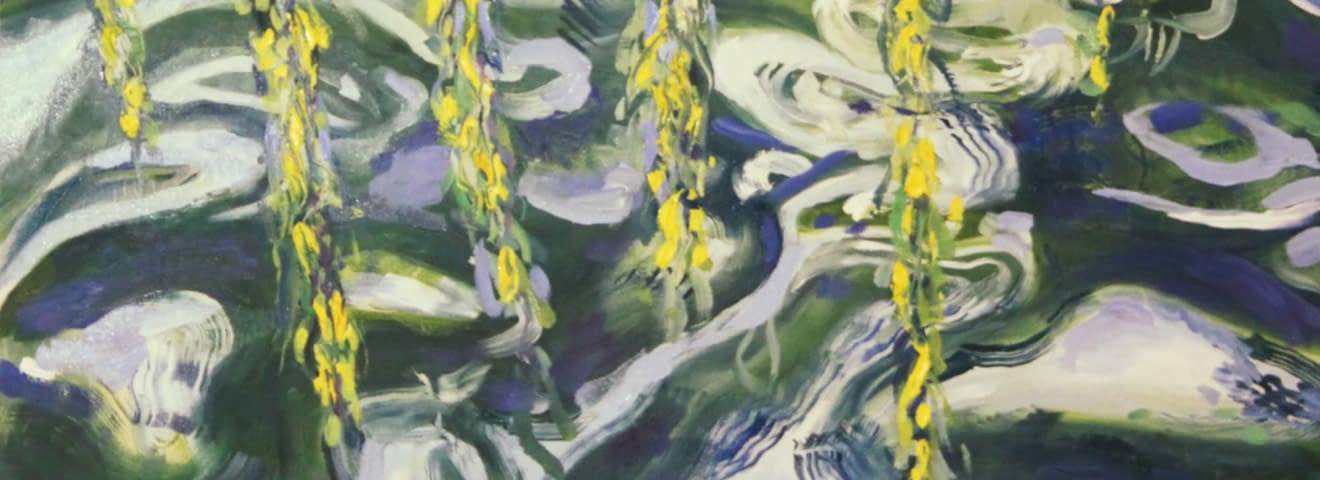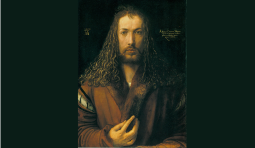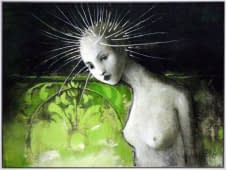Hope in Art
This blog focuses on the psychological and philosophical perspectives on hope from the Middle Ages to the present day.
1 Giotto di Bondone (1267-1337)
Hope as a Virtue in Christian Art.
Giotto di Bondone was an early pioneer of the Italian Renaissance whose religious works depicted hope within a theological framework. In his fresco cycle ‘Allegories of Virtues and Vices’ in the Arena Chapel in Padua, particularly in the scene of the Allegory of Hope, he depicted her as a woman with wings pointing towards the sky - a symbolic representation of trust in divine assistance and salvation.
Psychological perspective: From a psychological perspective, hope in Giotto could be understood as a manifestation of the transcendental hope described by the American psychologist Erich Fromm in his book ‘The Revolution of Hope’. Fromm argues that hope is an active, not passive attitude - a belief in the potential of change and development. Giotto's characters seem to await divine redemption, which in psychological terms could be described as a form of self-transcendence, an orientation towards a higher goal beyond the individual self.
Philosophical perspective: Thomas Aquinas described hope as one of the Christian virtues in his theological philosophy. He sees hope as central to the pursuit of a good life and as an attitude that points beyond the limits of the earthly. Hope was not a mere emotion here, but a moral and spiritual necessity. Giotto's art is strongly influenced by this scholastic perspective, in which salvation can be achieved through faith and hope in the divine.
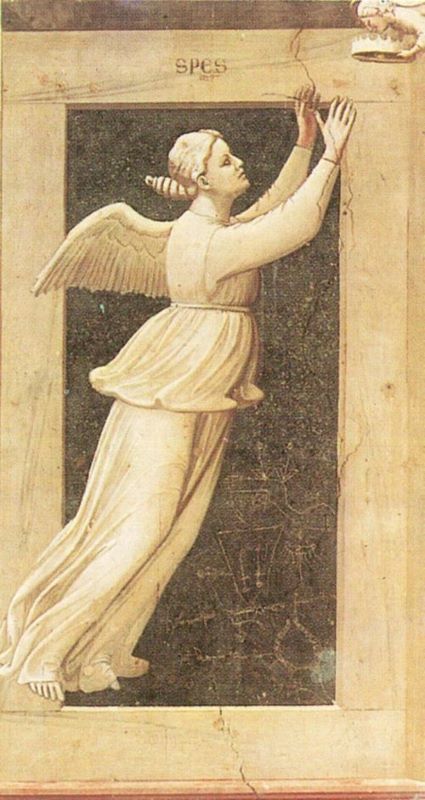
2 Hieronymus Bosch (1450-1516)
Hope in the Midst of Apocalypses
In works such as ‘The Garden of Earthly Delights’ (Prado Madrid), Bosch illustrates a world dominated by temptation and sin. Nevertheless, the Garden of Eden in the left wing of the triptych shows an original hope, a time before the Fall.
Psychological perspective: Bosch's depiction of paradise could be interpreted from the perspective of modern psychology as an expression of cognitive dissonance, as described by Leon Festinger. In Bosch's art there is a tension between the hope of redemption and the terrifying reality of human depravity. Hope here becomes a kind of compensatory mechanism that enables the viewer to bear the inadequacy and evil in the world.
Philosophical perspective: The apocalyptic mood in Bosch's work can be linked philosophically to existentialism, in particular to the idea of Sören Kierkegaard, the pioneer of existentialism, who describes hope as something that goes beyond despair. Kierkegaard postulates that hope arises through the ‘leap of faith’ - a paradox in which the uncertainty and abyss of life must be accepted in order to experience true hope. Bosch manages to express this dialectical relationship between despair and hope in his surreal depictions.
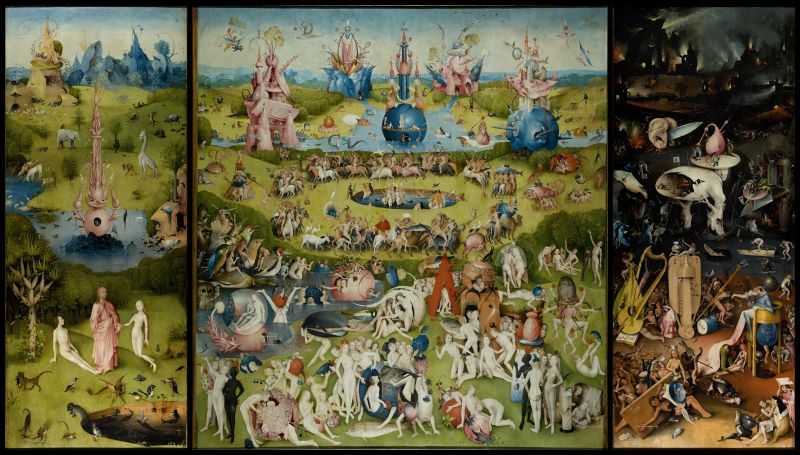
3 Artemisia Gentileschi (1593-1656)
Hope in Overcoming Trauma
Artemisia Gentileschi was one of the most important Baroque painters and created works that are not only technical masterpieces, but also bear witness to personal experiences. In her depictions of biblical heroines such as Judith or Susanna, she expresses a deep desire for justice and redemption, which is closely linked to her own biography, in particular her rape and the trial that followed. One of her most famous works, ‘Judith Beheading Holofernes’ (1612) (Real Bosco di Capodimonte in Naples and Uffizi Florence) is not only a depiction of violence, but also a symbol of hope for revenge and the restoration of honour.
Psychological perspective: Artemisia Gentileschi can be viewed through the psychological approach of post-traumatic maturation, a concept that describes how people can grow and develop after extreme traumatic experiences. According to psychologists, Richard Tedeschi and Lawrence Calhoun, hope can play an essential role in the healing process by shifting the focus from pain to the possibility of positive change. Gentileschi's works offer a visual example of this psychological development - addressing not only pain, but also hope for justice and restoration.
Philosophical perspective: Philosophically, Gentileschi's works can be placed in the context of feminism and the idea of empowerment. Simone de Beauvoir wrote in ‘The Other Sex’ that women are often held in a position of oppression, but can free themselves through action and self-determination. Gentileschi's portrayal of Judith as a powerful heroine symbolises this act of self-empowerment, which points beyond personal and social obstacles. Hope in her art thus becomes a source of strength for resistance and overcoming oppression.
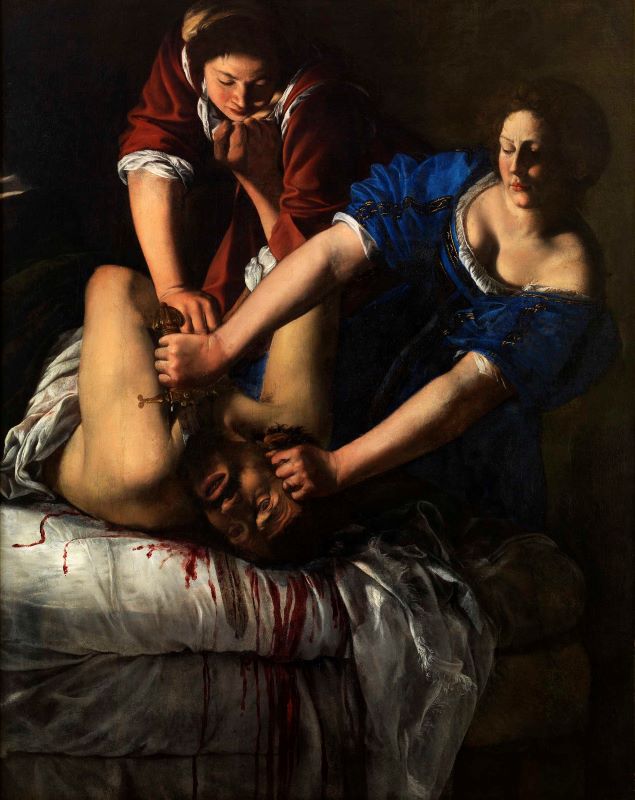
4 Francisco de Goya (1746-1828)
Hope Despite Darkness
Goya, known for his gloomy works about violence and suffering, also repeatedly showed moments of hope, such as in ‘El sueño de la razón produce monstruos’ (‘The Sleep of Reason Produces Monsters’) (Prado Madrid), where hope for the return of reason is hinted at.
Psychological perspective: From a psychological perspective, Goya shows the resilience of human beings. Martin Seligman, founder of positive psychology, describes hope as an important part of resilience, the ability to carry on despite great difficulties and trauma. In Goya's works, particularly in his depiction of the Sleep of Reason, we see this resilience - despite the chaos and darkness, hope remains that reason and progress will return.
Philosophical perspective: Goya's works are set in the context of the Enlightenment, a time of belief in reason and progress. In his Philosophy of Enlightenment, Immanuel Kant emphasised the importance of reason as the basis of hope for a better world. In answer to the question ‘What is Enlightenment?’, Kant wrote that by using their reason, people are able to achieve their own emancipation and thus a better future. Goya, although often pessimistic, was deeply rooted in this philosophical tradition and presented hope as a concept that can be restored through knowledge and enlightenment.
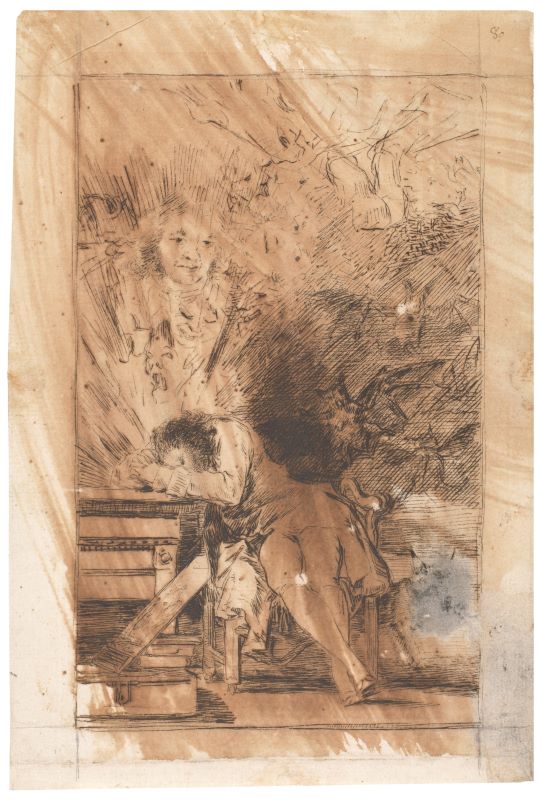
5 Caspar David Friedrich (1774-1840)
Romantic Hope in Nature
Friedrich's romantic landscape paintings such as ‘The Wanderer above the Sea of Fog’ (Hamburger Kunsthalle) symbolise the longing for the infinite and the spiritual hope that humankind can find in nature.
Psychological perspective: From the perspective of modern psychology, Friedrich's art could be seen as an example of contemplation and mindfulness. Nature plays an important role in the psychological concept of Restorative Environments, as developed by Rachel and Stephen Kaplan. This theory states that natural environments can offer hope and renewal by calming the human psyche and creating a space for reflection. Friedrich's works reflect the idea that hope can be found through a return to nature and stillness.
Philosophical perspective: Friedrich's works are deeply rooted in the philosophy of Romanticism, which sees hope in the connection between man and nature. For philosophers such as Friedrich Schelling, nature was not only a physical reality, but also an expression of the infinite and the divine. Romantic hope was the conviction that man can find a deeper truth and fulfilment in nature, beyond the rational and materialistic world.
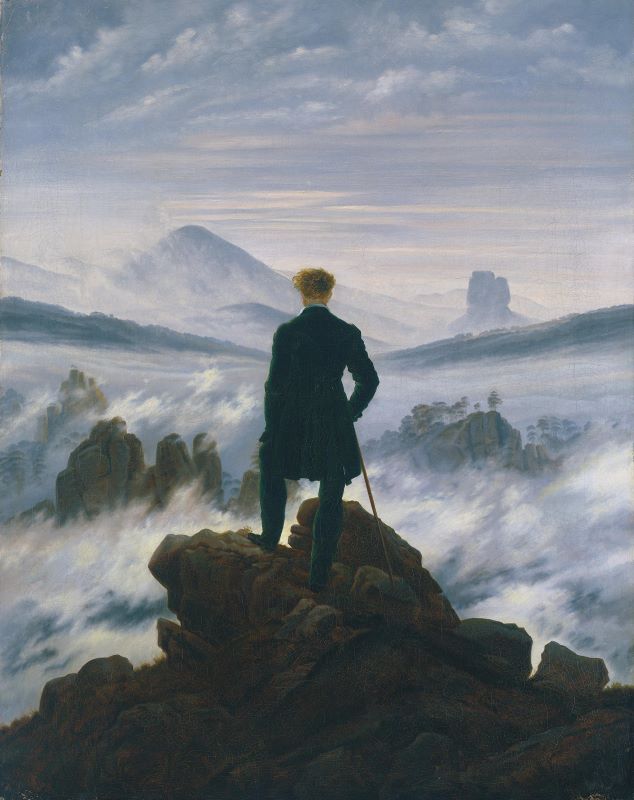
6 Käthe Kollwitz (1867-1945)
Hope in the Face of War and Loss
The German artist Käthe Kollwitz is best known for her haunting depictions of poverty, war and social injustice. Her works, especially the prints and sculptures, thematise the suffering of the working class and the atrocities of the First World War. Despite the often sombre themes, her art is imbued with a deep sense of solidarity and compassion, implying hope for change and social justice. Her well-known work ‘Mother with Dead Son’ (1937-1938) (Käthe Kollwitz Museum Cologne) expresses not only grief, but also hope for a future peace.
Psychological perspective: From a psychological perspective, Kollwitz' work could be linked to the concept of collective hope. Ernst Bloch, an important philosopher of hope, spoke of the ‘concrete utopia’, in which hope is not just a feeling but represents an active endeavour for a better future. Kollwitz' works, which show the suffering of the underprivileged, reflect a social hope that strengthens the sense of community and promotes solidarity. In psychology, this aspect of hope is often seen as central to psychological well-being in times of social hardship.
Philosophical perspective: Kollwitz' works can be linked to Ernst Bloch's philosophy of hope. In his work ‘The Principle of Hope’, Bloch argues that people have a ‘premonition’ of a better, more just state of affairs and must actively work towards its realisation. Kollwitz, who campaigned for social reform throughout her life, depicted the need to create a fairer world through her art. Hope in her art is therefore both personal and political - it reflects the aspiration for a more peaceful and just future, despite the horrors of war and loss.
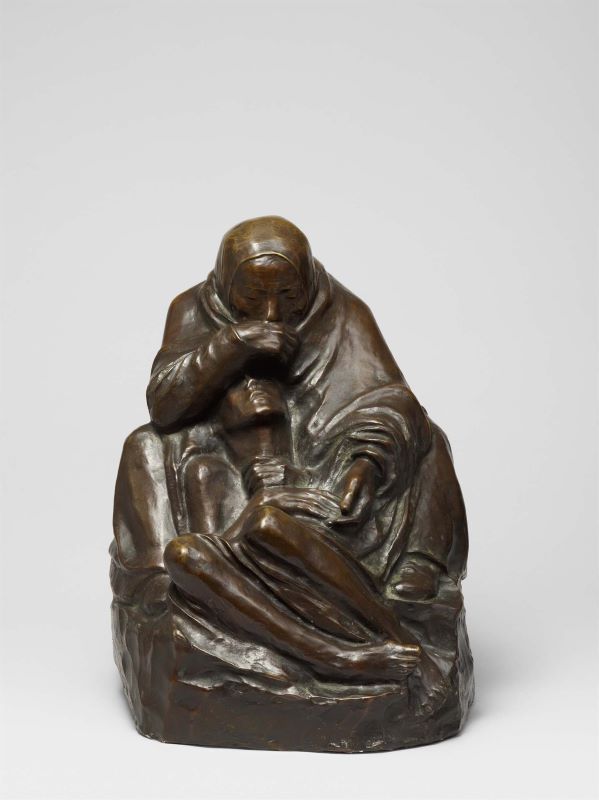
7 Frida Kahlo (1907-1954)
Hope in the Fight Against Physical and Emotional Suffering
Frida Kahlo, the Mexican artist, is known for her autobiographical works in which she thematised her physical pain and emotional struggles. Her self-portraits, such as the famous ‘La Columna rota’ (‘The Broken Column’) (1944) (Museo Dolores Olmedo Mexico), show her struggle with chronic pain and severe health problems. Nevertheless, a strong message of survival and hope runs through her works. In many of her paintings, she not only addresses her suffering, but also her deep connection to Mexican culture and her desire for personal healing and renewal.
Psychological perspective: Frida Kahlo's work can be viewed in the context of coping psychology. According to Susan Folkman and Richard Lazarus, hope is a central element in the coping process, especially in the case of chronic illness or traumatic experiences. Kahlo's artwork reflects this process by visualising her inner struggles, but at the same time depicting the struggle for acceptance and hope. Her paintings express the psychological struggle to endure suffering while maintaining hope for healing and self-acceptance.
Philosophical perspective: Philosophically, Kahlo's work could be linked to Nietzsche's concept of amor fati (love of fate), which calls for the acceptance of life in all its ups and downs. In Kahlo's work, hope is often portrayed not as an escape from pain, but as a form of self-acceptance. She confronts suffering and the reality of her existence, much like Nietzsche's Übermensch, who affirms life in its entirety. The hope in Kahlo's art is therefore not the hope of a perfect future, but the hope of finding a form of meaning and beauty in the present pain.
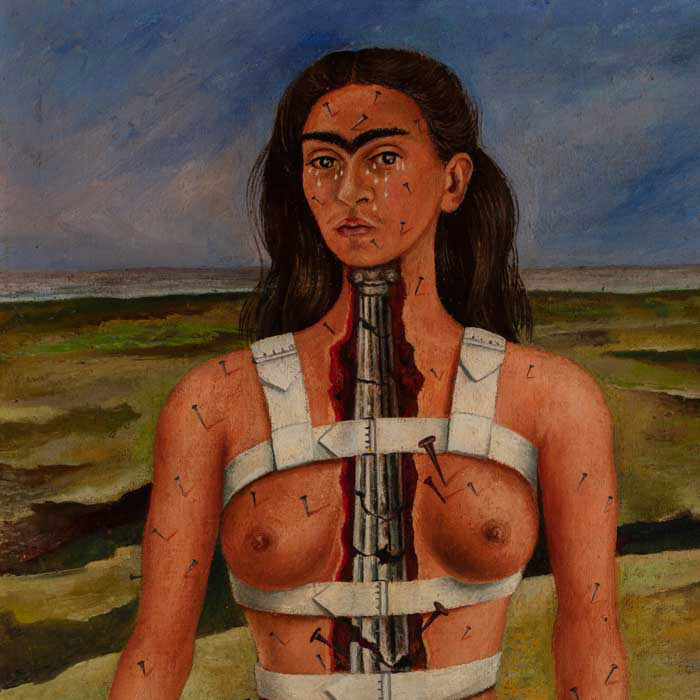
8 Banksy (active since the 1990s)
Hope in the Social Context of Modernity
Banksy, the anonymous street artist, uses his works to draw attention to social injustice. His famous ‘Girl with Balloon’ shows a subtle but powerful message of hope for peace and freedom.
Psychological perspective: Psychologically, Banksy's art can be understood as an expression of collective hope, which is a central component of humanistic psychology as developed by Carl Rogers and Abraham Maslow. This school of thought sees hope as the motor for personal growth and social change. In ‘Girl with Balloon’, hope for a better future manifests itself, despite the difficulties that plague modern society.
Philosophical perspective: Philosophically, Banksy's work can be linked to the existentialism of Jean-Paul Sartre and Albert Camus. Both philosophers emphasised that man lives in an absurd world, but still has the responsibility to create meaning through action and commitment. Banksy's art is an expression of this idea: hope does not arise by itself, but is the result of conscious resistance to injustice and the active creation of a better world.
Conclusion: Art as a Bridge between Psychological and Philosophical Hope.
In the visual arts, hope is a profound and universal theme that can be viewed both psychologically and philosophically. Artists such as Giotto, Bosch, Goya, Friedrich and Banksy have expressed hope in different ways in their works, and their works reflect the psychological and philosophical views of their time. While psychology describes hope as an inner force that enables people to survive and grow despite adverse circumstances, philosophy often views hope as a metaphysical or existential necessity to find meaning and direction in life.
Artists such as Artemisia Gentileschi, Käthe Kollwitz and Frida Kahlo have also powerfully addressed the themes of pain, oppression and loss in their art, but despite their dark topics, hope remains a central motif. These works offer unique insights into the psychological mechanisms of resilience and survival, as well as philosophical questions of human existence. While hope in the works of male artists was often centred on religious or social utopias, the works of these female artists focus on the individual struggle for hope in the midst of personal and collective suffering. They thus offer important perspectives that enrich and expand the understanding of hope in art.
Titelbild: Judit Flamich, Willow Tree over the Water, 2019.
